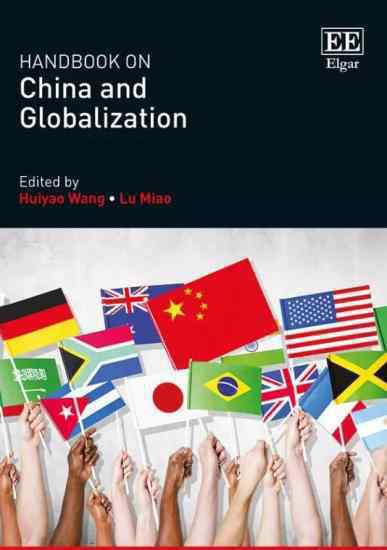
When people talk of high fashion, they talk about the Paris Fashion Week, brands such as Chanel and Dior, but always never about Chinese brands or designers though many top products are made in China.
Zhou Yiqi, Vice Chairman of China Fashion Designers Association, concedes that but according to him, it doesn"t mean Chinese designers lack talent. It is mainly because China"s external communication capacity and cultural influence are limited, he said.
At the founding ceremony of the Center for Global Fashion and Culture Industry, a platform launched by the Center for China and Globalization to raise the profile of Chinese fashion brands, Zhou and other professionals from the garments industry and fashion magazine Women"s Wear Daily came together in Beijing on December 2 to brainstorm on how to raise the profile of the Chinese fashion industry.
Voice of culture
"Fashion is the voice of culture," said Liu Bingsen, founder of Vogue China and President of WWD China. "When the Roman Empire ruled the Western world, speaking Latin became a trend. When Great Britain was at the height of its power, having afternoon tea was a popular habit. When the U.S. dominates the world, almost everybody wears jeans."
But though an expression of culture, fashion in China was neglected for decades, which also affected other industries. The garments industry is a case in point. Clothes are an important part of the fashion industry and China boasts a huge garment market. Over 45 billion items are produced in the country annually, and more than 5 million people work in related industries. Clothing consumption accounts for 10 percent of total retail sales of consumer goods.
Moreover, China has developed a very complete industrial chain, starting from cotton production and extending to manufacturing and marketing, which can be viewed as its core competitiveness. It is also in the first tier in advanced technology and intelligent manufacturing in the clothing industry.
"This is why many factories are moving back to the Chinese mainland in recent years as we enjoy a complete industrial chain," said Gao Min, President of Hampel International, a clothing manufacturer in Hong Kong.
However, despite the advantages, China is far from being strong or competitive globally.
"The reason is that we have long neglected or failed to catch up with other countries in a critical part—the fashion culture," Zhou said. "Currently, Westerners define the mainstream aesthetics of the international community instead of us, and we just follow suit."
Chinese traditional culture is in a way a reason for the low profile of the fashion industry in the country. "Fashion is mostly pursued by young people in China," said Zhang Ning, a professor at Beijing Normal University. "Because most of them have no power or high social status, they need to find a way to be noticed. They strive to do that through the way they dress. However, senior people always find it unnecessary. They normally do not pay attention to whether they wear fashionable clothes or not as their value is recognized irrespective of what they wear."
In ancient China, social, political or even cultural power was mostly held by senior people, who were regarded as the embodiment of wisdom due to their long life experience. If their offspring did not treat them with respect, they would be punished by the government and be despised by their friends. All these cultural legacies led to the dearth of attention to fashion.

An attitude issue
Also, fashion can be interpreted, to some extent, as being different, personalized and individualized. There is an old Chinese saying that the tallest tree in the forest is liable to be the first to be felled by the wind. Even today, being different or standing out is not desirable to a large part of Chinese society.
"We need to change the conservative attitude and learn to be more open-minded. We can try to have a youthful mentality and creativity by being fashionable when dressing up," Zhang said.
To improve the influence of China"s fashion industry, long-term efforts are required. The attendees called the founding of the Center for Global Fashion and Culture Industry a meaningful step in that drive.
Miao Lu, Deputy Director of the CCG, said it will host seminars, conduct research which will be publicized in fashion magazines like WWD, and also drum up attention for Chinese intangible cultural heritage in UN organizations and global events to improve the international influence of the Chinese culture and fashion industry.
Zhou said a complete fashion cultural system should be shaped, comprising research, education, talent nurturing, publication and consumption.
One organization alone cannot make much difference. The fashion industry"s progress depends on improving the communication capacity of the country.
"Made-in-China products can be seen in almost all countries, but most of them are foreign brands, with only the manufacturing done in China. We have few world-renowned Chinese brands," Zhang said.
China also lags behind in creating overseas publicity for its own culture and core values although it is one of the most advanced civilizations with 5,000 years of history.
"Although the Chinese have won the Nobel Prize in Literature, the Hugo Award and the Franz Kafka prize, yet Chinese popular culture, such as cartoons and films, has very limited influence in the world," Zhang said. "If we want to revive our traditional and splendid culture and improve its impact on the world, we need to convey it properly to the world. If Chinese culture gains more popularity, then the influence of our fashion industry would be definitely improved."
From Beijing Review, 2019-12-9
CCG Books

● Edited by Wang Huiyao, President and Miao Lu, Vice President, Center for China and Globalization, Beijing, China
More Information
An excellent guide for understanding the trends, challenges and opportunities facing China through globalization, this Handbook answers the pertinent questions regarding the globalization process and China’s influence on the world.
With contributions from leading experts and international researchers, each chapter covers key topics regarding China’s participation in globalization, including: China’s new role in global economic governance; outward direct investment; China’s soft power and the implications for foreign relations; global migration, diaspora and talent. An enriching range of case studies and extensive empirical research are used to explore the successes and failures of globalization in China, and to discuss the dilemmas facing decision makers in today’s globalized world. A major contribution to the field, this Handbook offers valuable insights to China’s often misunderstood globalization process.
An essential reference for academics and researchers looking for a go-to empirical resource, this Handbook provides scholars of economics, politics and East Asian studies with an exemplary selection of contemporary research on China and globalization.
● Links:
https://www.e-elgar.com/shop/handbook-on-china-and-globalization

● Authors: Wang Huiyao, President and Miao Lu, Vice President, Center for China and Globalization, Beijing, China
The first effort to address the gap regarding higher-end talent within the scholarly work on internal labor migration in China
Provides an essential overview of the major milestones in China’s talents attraction policies, as well as several recommendations to help further improve those policies
Investigates corresponding policies in Germany, Japan, and Singapore to serve as a basis for comparison
Provides a snapshot of first-hand reference material for relevant stakeholders involved in cooperation with China
More Information
This book offers the most comprehensive, up-to-date assessment of China’s domestic and international migration. Restructuring economic development requires large numbers of educated and skilled talents, but this effort comes at a time when the size of China’s domestic workforce is shrinking. In response, both national and regional governments in China have been keen to encourage overseas Chinese talents and professionals to return to the country. Meanwhile, the Chinese government has initiated a number of policies to attract international highly-skilled talents and enhance the country’s competitiveness, and some Chinese policies have started attracting foreign talents, who are coming to the country to work, and even to stay. Since Chinese policies, mechanisms, and administration efforts to attract and retain skilled domestic or overseas talents are helping to reshape China’s economy and are significantly affecting the cooperation on migration and talent mobility, these aspects, in addition to being of scholarly and research interest, hold considerable commercial potential.
● Links:
http://1.com/d/uploads2/2020-11/16/fbhg5enapmf />
Other CCG News:
2019 Chinese Returned Scholars Innovation&Entrepreneurship Forum
SCMP: HK"s youth, talent & innovation in the Greater Bay Area
China Daily | Wang Huiyao: Partnering for success
CCG HK Council report on "Global Talent in the Greater Bay Area"
G20 Summit Encouraging, CCG Continues to promote Sino-US ties

1.《overlooked Beijing Review | Overlooked Icons》援引自互联网,旨在传递更多网络信息知识,仅代表作者本人观点,与本网站无关,侵删请联系页脚下方联系方式。
2.《overlooked Beijing Review | Overlooked Icons》仅供读者参考,本网站未对该内容进行证实,对其原创性、真实性、完整性、及时性不作任何保证。
3.文章转载时请保留本站内容来源地址,https://www.lu-xu.com/tiyu/478846.html




